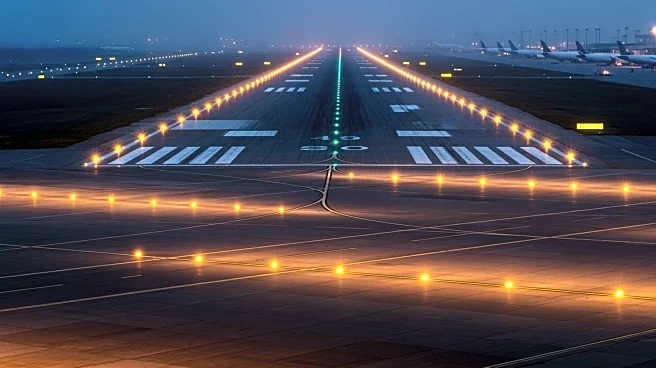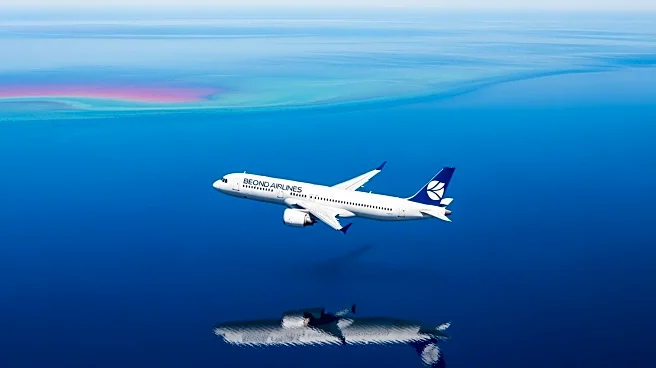What's Happening?
The Middle East's major airlines are experiencing a varied recovery following the COVID-19 pandemic, as highlighted during the Dubai Airshow. Qatar Airways has surpassed its pre-pandemic flight levels,
operating more flights than in 2019 due to its diverse fleet of widebody and narrowbody aircraft. Emirates, while operating the second-highest number of flights, remains slightly below 2019 levels due to fleet adjustments. Saudi Arabian Airlines and Etihad Airways have also seen changes in their flight operations, with Etihad showing the most significant percentage increase compared to 2019. These airlines are adapting to the post-pandemic landscape, with fleet changes and strategic adjustments.
Why It's Important?
The recovery of Middle Eastern airlines is crucial for the region's aviation industry, which plays a significant role in global air travel connectivity. The ability of these airlines to adapt and recover impacts international travel routes and economic activities linked to tourism and trade. Qatar Airways' success in surpassing pre-pandemic flight levels demonstrates resilience and strategic fleet management, setting a benchmark for other carriers. Emirates and Saudi Arabian Airlines' adjustments reflect the challenges of fleet management and operational efficiency in a post-pandemic world. The recovery trajectory of these airlines will influence regional economic growth and the aviation sector's global dynamics.
What's Next?
As Middle Eastern airlines continue to recover, they may focus on further fleet optimization and expanding their route networks to capture increased demand. The ongoing adjustments in fleet composition, such as the introduction of newer aircraft models, could enhance operational efficiency and passenger experience. Airlines might also explore partnerships and alliances to strengthen their market position and improve connectivity. The aviation industry will closely monitor these developments, as they could set trends for global airline recovery strategies. Stakeholders, including governments and industry leaders, may engage in discussions to support the sector's growth and address challenges related to sustainability and innovation.
Beyond the Headlines
The recovery of Middle Eastern airlines may also have implications for environmental sustainability in aviation. As airlines adjust their fleets, there is potential for increased focus on fuel efficiency and reduced emissions. This shift could drive advancements in sustainable aviation technologies and practices. Additionally, the recovery process highlights the importance of resilience and adaptability in the face of global disruptions, offering lessons for other industries. The strategic decisions made by these airlines could influence broader discussions on crisis management and recovery planning in the aviation sector.












